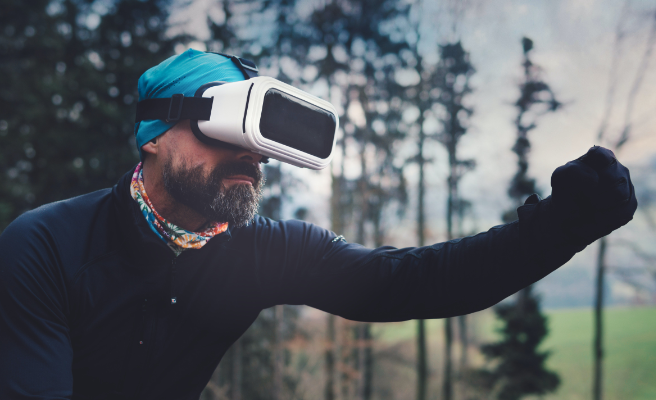- May 20, 2019
- 8 min
The History of VR - In VR
The 16 most significant milestones of Virtual Reality.
Magnolia in action
Take 12 minutes and a coffee break to discover how Magnolia can elevate your digital experience.
Here at Magnolia we’re counting the days until our new Oculus Quest VR headset arrives (pre-ordered naturally). No, we’re not in the videogame business, but we are in the Digital Experience business, and this is the most significant consumer-level hardware in the DX space since the smartphone. So, in honor of the launch of the Quest we wanted to share some milestones in this amazing path of human invention and exploration of alternate realities.
Oculus has announced that the app store for the Quest will be very restrictive. So at the same time, let’s celebrate the ever-relevant freedom of the open web. You see, the Quest has a web browser, and the new WebVR and WebXR standards allow us to create VR experiences for it. That’s why we decided to publish this article as a VR Experience.
(Click the above link. Then, on a VR device, including your smartphone, click on the eyeglasses icon in the corner. On a computer, you can use the arrow keys on the keyboard to navigate, and click-and-drag to look around.)
Magnolia's headless capabilities and Stories App made it easy to pull this blog-post content into VR. You can find out how with this high-level overview & technical details and github example.
(Brands looking for a VR-ready CMS, check us out.)
Dreams
The original virtual reality is totally natural, has an adoption rate of 100%, and has been around longer than humankind. Upon waking we know that our dreams are illusions, but while in them we think that they are real, even when things don’t really make a lot of sense. Why is it so hard to tie my shoes?
1956 - Sensorama
Morton Heilig built a prototype of his Experience Theater concept: The Sensorama. Not only did it play a 3D film with stereophonic sound, but also included wind, aromas, and shaking seats, all in an arcade style cabinet. Far out.
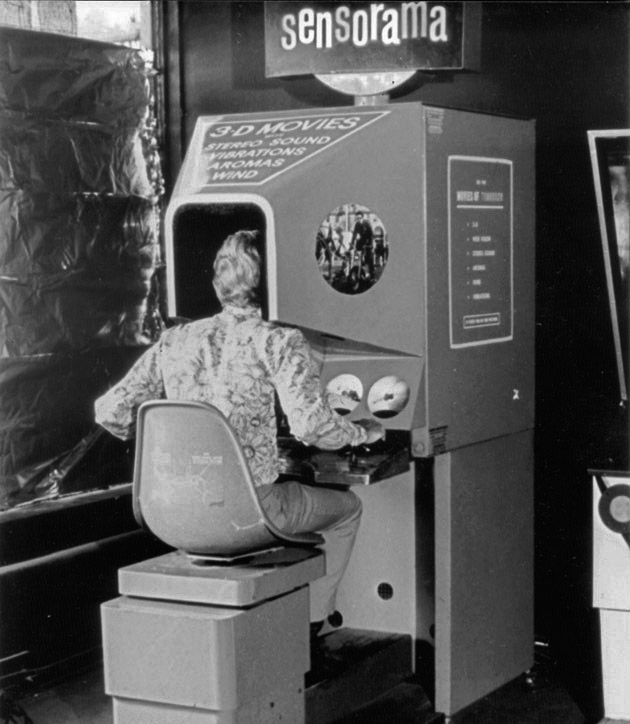
1968 - Sword of Damocles
The first VR headset only showed line drawings and relied on a huge contraption hung from the ceiling to track the head position. It was developed by Ivan Sutherland and students at the University of Utah.
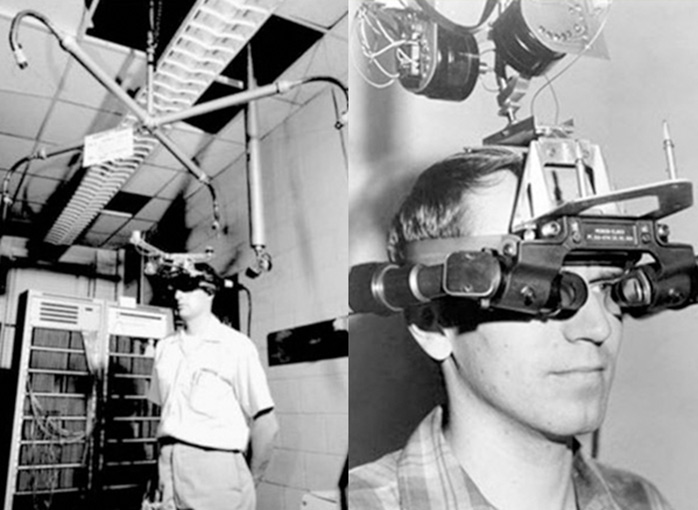
1973 - Welt am Draht (World on a Wire)
World on a Wire is a made-for-tv psycho film from West Germany based on the novel Simulacron-3 from Daniel Galouye. Our hero works at the Cybernetics institute on a supercomputer which runs a simulation program with over 9000 virtual people. After his boss dies under mysterious circumstances, Dr. Fred Stiller is promoted to the technical director role. When he contacts ‘Einstein’ the only virtual person which knows it is a simulation, it tries to escape to the real world. In the process Einstein reveals that the real world is in fact just another higher level simulation.

1978 - MUD1
MUD1 was the first “Multi User Dungeon”, a video game where many people could play at the same time and interact, over a network. It is considered the oldest virtual world. The game was purely text-based with no images at all, let alone 3D graphics. It was created by Roy Trubshaw and Richard Bartle as students at the University of Essex.
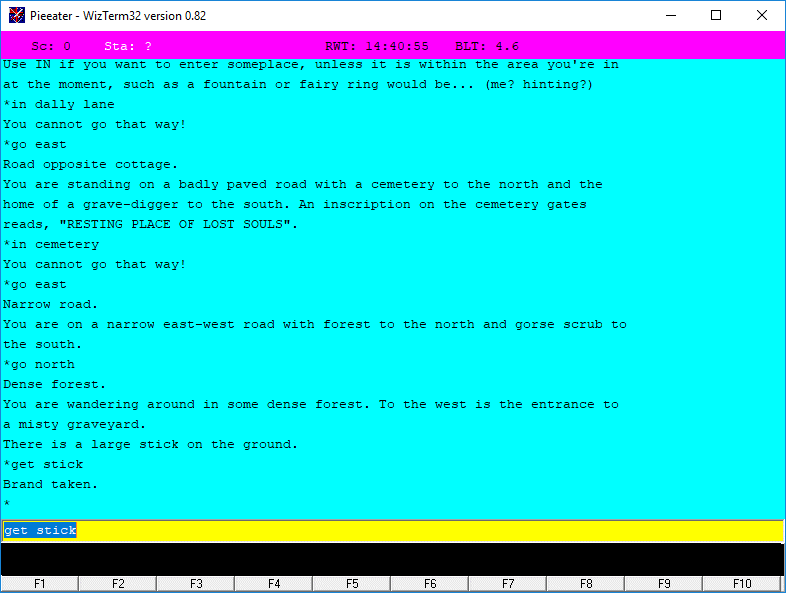
1984 - Neuromancer & Cyberpunk
The publishing of Neuromancer marks the birth of the Cyberpunk genre and is the first novel to win the Hugo award, the Nebula award and the Philip K. Dick award. In William Gibson’s dystopian near future, everyone is jacked into digital ‘decks’ which bring them into a global shared virtual environment, via ‘the matrix’. Case, the anti-hero, is a burnt out drug addict cyberspace hacker, who’s given a second chance - at a price.

1988 - Holodeck
The TV show Star Trek: Next Generation, finally brought the simmering VR meme to the (geeky) mainstream with the Holodeck. This room on the USS Enterprise synthesizes life-like immersive holograms where crew members can go to take a vacation. Fortunately for us, there was always some glitch or another in the system, putting the crew into moral dilemmas, and making for some great entertainment.


1992 - The Cave
To enter the cave, you don a pair of 3D glasses and enter a 3x3x3 meter “room” where from 4 to 6 of the sides are fully covered in video projections. Just like in a 3D movie, the glasses ensure that each eye sees a slightly different view. The projections also respond to the position of the glasses to create a realistic 3D experience. In the early 90’s this required a beast of a computer rig, typically from “Silicon Graphics”. The original CAVE cost $2,000,000, and was developed at the University of Chicago’s EVL.
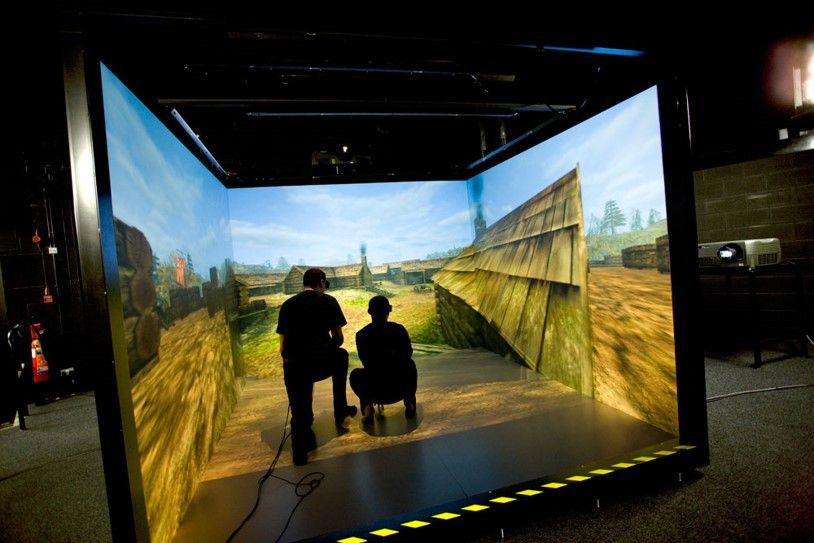
1993 - Sega VR
Sega planned a VR headset accessory for its popular Genesis home video game console. The project never launched, probably due to motion sickness concerns. But you have to watch this cringe-inducing demo at CES by Alan Hunter, one of the original 5 MTV vjs.
1995 - Virtual Boy
Nintendo brought down the VR ticket price, with its $179.95 console, the Virtual Boy. But even with the bundled Mario’s Tennis game, It was a total flop. The poor resolution, awkward ergonomics, and lack of any color besides red might have had something to do with that.
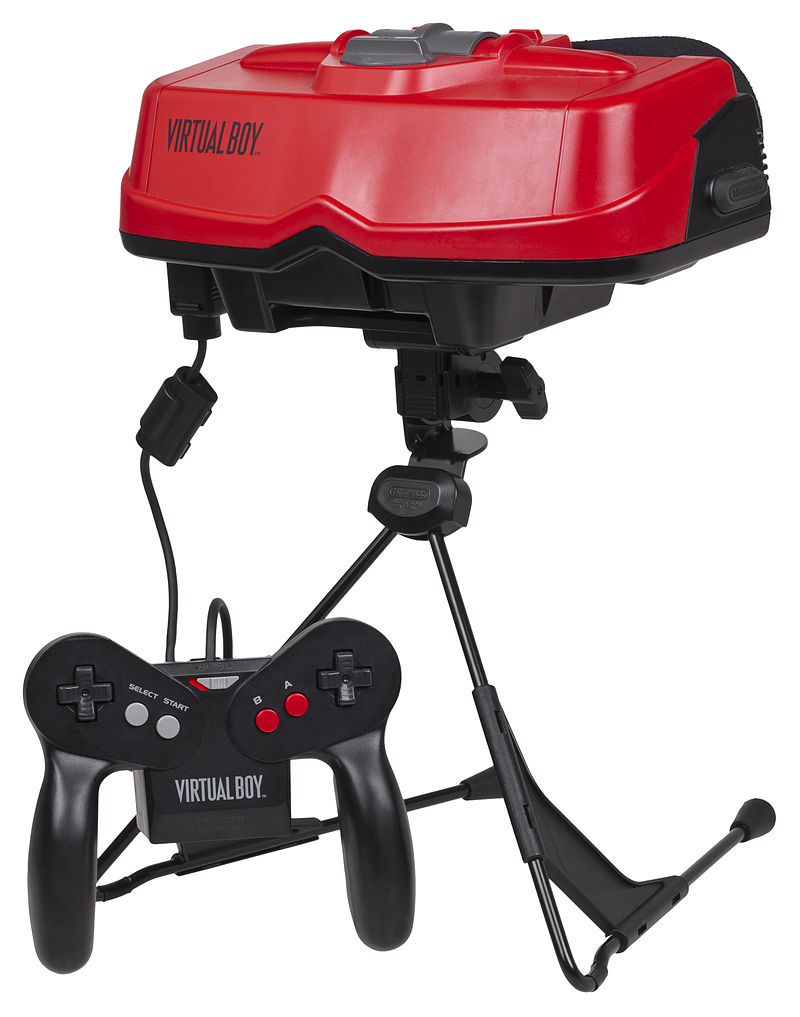
1999 - The Matrix
The VR meme’s real breakthrough was the surprise smash-hit film The Matrix, written and directed by the Wachowskis. Spoiler Alert. Hacker Neo is confronted with the fact that reality as we know it is actually a simulation. (Notice a trend here?) Humankind are actually all encased in pods and are milked for “bio-energy” by our evil AI overlords. Neo gets the now legendary choice, return to his blissful ignorance in the simulation (blue pill), or fight for humanity in the bleak reality (red pill).


2003 - Second Life
Second Life is a sprawling virtual world where anyone can join as a ‘resident’ and build, create, shop, socialize and trade virtual properties. Which has brought the service some legal issues. There are over 800,000 active residents. This and MMORPG's (Massively Multiplayer Online Role Playing Game) like World of Warcraft offer a persistent, alternative, virtual, reality - even if only through the small rectangular window of a PC screen instead of a 360 3D experience.
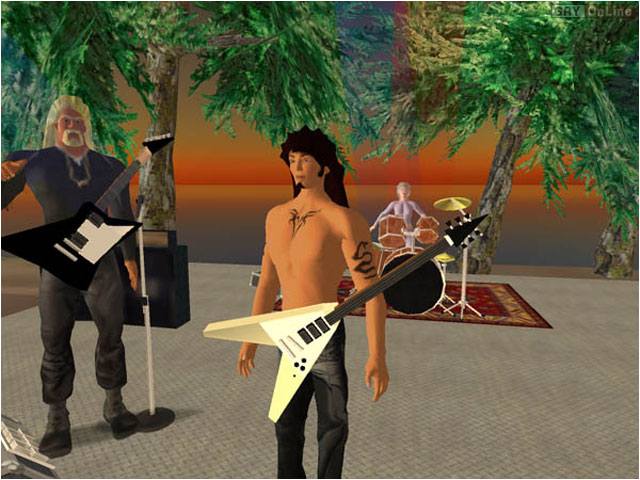
2003 - “Are you living in a simulation?”
Nick Bostrom made waves with his Simulation Hypothesis Essay: “One thing that later generations might do with their super-powerful computers is run detailed simulations of their forebears or of people like their forebears... Then it could be the case that the vast majority of minds like ours do not belong to the original race but rather to people simulated by the advanced descendants of an original race. ...if this were the case, we would be rational to think that we are likely among the simulated minds rather than among the original biological ones.”

2013 - Rift DK1
The first Oculus Development Kit (DK1) was a VR headset accessory for a PC launched as a Kickstarter project. Palmer Lucky and the Oculus team proved that consumer technology had finally caught up with the cyberpunk vision from two decades before. The DK1 was pretty ghetto with a mediocre pixelated display and no positional tracking. But it was cheap, had a wide field of view, and launched the modern wave of VR. Facebook bought Oculus in 2014 for 2 billion.
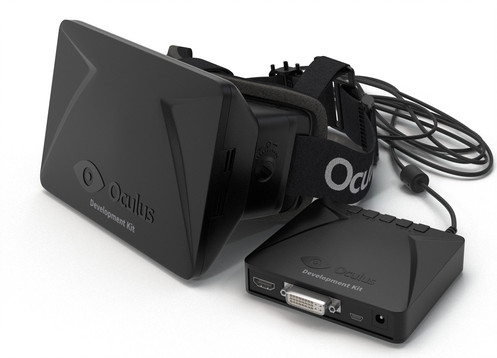
2016 - Hololens
Microsoft introduced the first true Augmented Reality (AR) glasses - instead of only seeing a virtual environment, computer-generated imagery is overlaid on the users view of the real world. This augmented reality is way harder to accomplish since the technology must somehow scan and understand the actual world in order to place the virtual objects properly. Much hyped Magic Leap recently released a similar product aimed at consumers whereas the Hololens targets enterprise usage....and Minecraft.
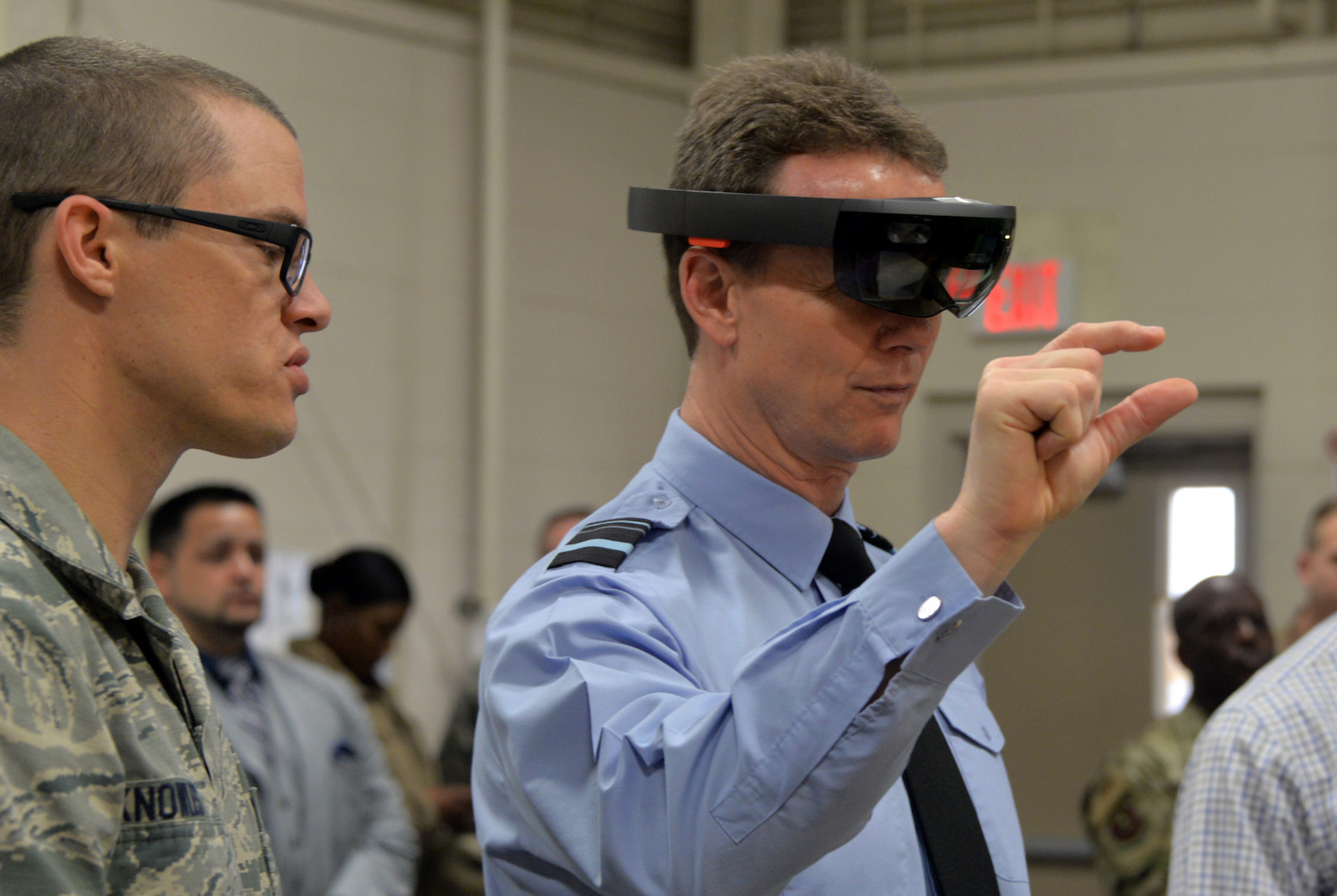
2017 - ARKit & ARCore
AR hit the tech press and keynotes in a big way last year. Apple and Google both released software toolkits to help developers create augmented reality apps for the iOS and Android mobile platforms. It allows the phone to know where it is in relation to the floor and other room surfaces, so developers can place virtual pokemon or Ikea furniture in your kitchen. The beauty of the system is that it just uses the normal camera on all smartphones to achieve this positioning. This is known as “Inside-out tracking” or SLAM.
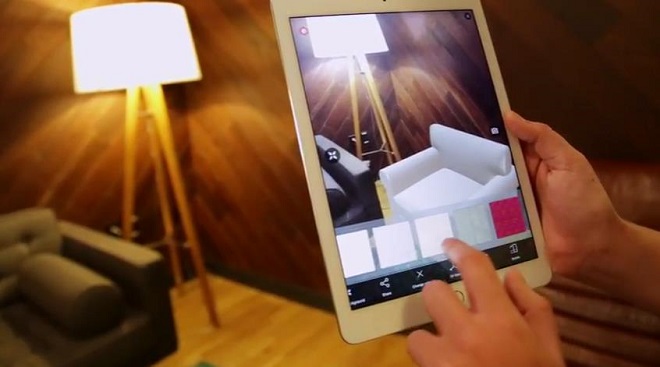
2019 - Oculus Quest
Here and now in 2019, we’re the lucky devils who get a VR system with the capabilities of the $2,000,000 Cave system at the price of a video game console, that fits in a shoulder bag, and doesn’t even need a separate computer. The Quest and the other next generation headsets embed 2 to 5 cameras in order to use SLAM to track the position of the headset and the hand controllers.
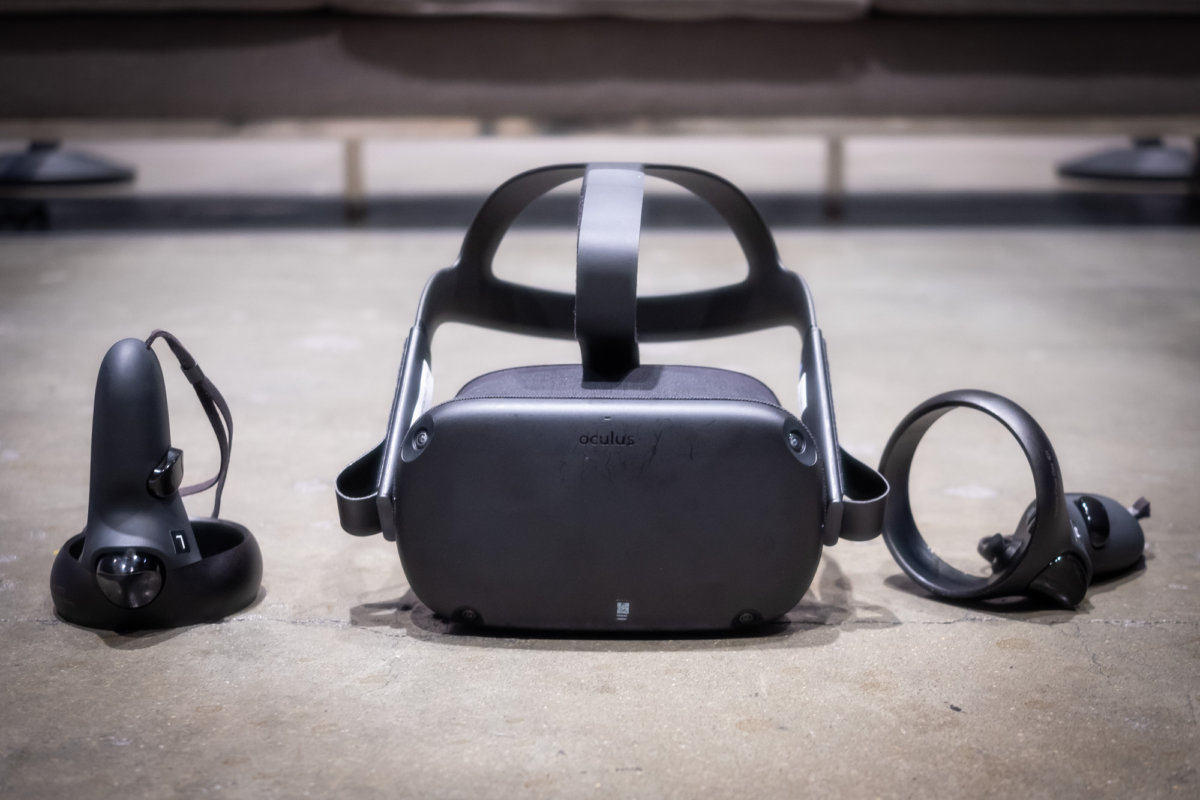
Conclusion
And the journey continues. One thing that becomes clear with the latest “inside-out” tracking systems, is that VR and AR is more than just a display technology, it is increasingly a scanning technology (the Quest has 5 cameras!). It’s going to be pretty cool to be able to just look at something and instantly get extra information about it. But what about looking at people, what are the privacy and societal implications of this new wave of world scanning systems?
Some Questions
In doing this survey of VR, a few questions naturally come up.
1. What do the next 10 years of VR look like?
2. Is it possible that we are living in a simulation? :)

